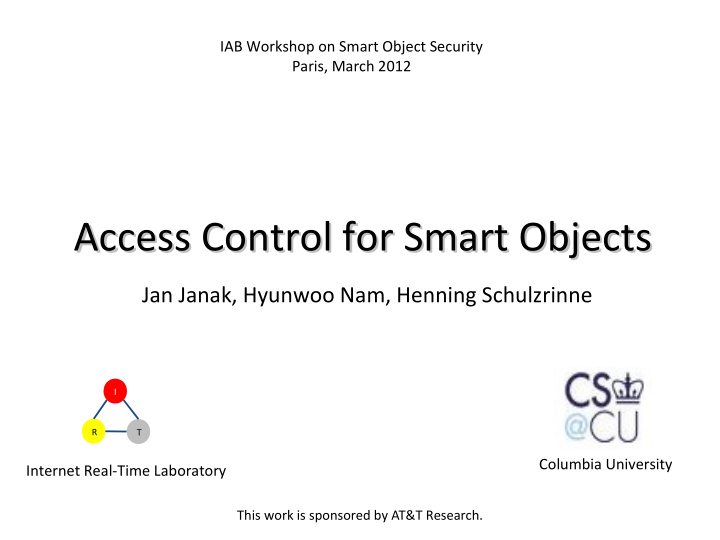



IAB Workshop on Smart Object Security Paris, March 2012 Access Control for Smart Objects Access Control for Smart Objects Jan Janak, Hyunwoo Nam, Henning Schulzrinne I R T Columbia University Internet Real-Time Laboratory This work is sponsored by AT&T Research.
Office Automation with Smart Objects ● Multiple controllers ● Need to specify and enforce policy ● A variety of inputs ● Provide reasonable default policies for SO Overhead Light Policy: id==“irt_switch” or location==“irt_lab” or (action==“OFF” and app==“SECE”) or Group==“Facilities”
Initial System Architecture ● Controllers sends requests with a set of attributes ● PEP verifies attribute values and signs the request. ● Policy documents specify conditions and required attributes. ● Each Smart Object type has a default policy that can be overridden.
What Makes it Complicated? Policy Inputs SO Candidates ● Lights ● Identity ● Motion detectors ● Date and time ● Door locks ● Proximity ● Wall sockets ● Geo-location ● Towel dispensers ● Effort (press 3x) ● Fire alarm buttons ● Result of a vote ● Elevator controls ● Current state of SO ● Phones ● Organizational role ● Indoor location ● Randomness
Open Questions ● How do we describe and enforce access restrictions applied to Smart Objects? ● What protocols can we use to implement attribute-based access control? ● Mapping of credentials to CoAP/HTTP requests? ● Where is policy enforced? How do SOs learn the outcome? ● Default policy from SO manufacturers?
Recommend
More recommend